This article was medically reviewed by Lacy Windham, MD. Lacy Windham, MD, is a Board-Certified Obstetrician & Gynecologist in Cleveland, Tennessee. Dr. Windham attended medical school at the University of Tennessee Health Science Center in Memphis. Her residency was completed at Eastern Virginia Medical School in Norfolk, Virginia. She was the recipient of multiple awards during her residency training, including Most Outstanding Resident in Maternal Fetal Medicine, Most Outstanding Resident in Oncology, Most Outstanding Resident Overall, and Special Award in Minimally Invasive Surgery.
There are 9 references cited in this article, which can be found at the bottom of the page.
wikiHow marks an article as reader-approved once it receives enough positive feedback. In this case, 100% of readers who voted found the article helpful, earning it our reader-approved status.
This article has been viewed 2,024,409 times.
Braxton Hicks contractions are tightenings of the abdomen that can easily be mistaken for labor pains. They are caused by your uterus tightening and relaxing in preparation for eventual labor, but they are not a sign that labor has begun. Braxton Hicks begin as early as the second trimester but are more common in the third trimester. Every pregnant person has Braxton Hicks, but not everybody feels them.[1] Braxton Hicks contractions tend to increase in frequency and intensity near the end of the pregnancy and are often mistaken for labor.
Steps
Differentiating Between Braxton Hicks and True Labor Contractions
-
1Locate the pain. Does your contraction tighten in a band across your abdomen? If so, it's probably a Braxton Hicks contraction. True labor pain usually starts in the lower back and moves forward to the abdomen, or from the abdomen to the lower back.[2]
- True labor pains are often described as resembling menstrual cramps.[3]
- Pain in the lower back that comes and goes, and pressure in the pelvis, are often signs that your contractions are real.
-
2Evaluate the pain. Are the contractions uncomfortable, or very painful? Do they grow more painful with each contraction? Braxton Hicks are not typically painful and do not grow more painful with each contraction. They usually stay weak, or start strong and grow weaker.[4]
- True labor pains will steadily increase in strength.
Advertisement -
3Time the contractions. Braxton Hicks are often irregular. They do not grow closer together. True labor occurs at regular intervals that grow slowly closer together, starting 15 – 20 minutes apart and increasing to fewer than five minutes apart. True labor pains last 30 – 90 seconds.[5]
-
4Change positions. If you experience a contraction while sitting, try walking around. If you are walking or standing, sit down. A Braxton Hicks contraction will often stop when you change position. True labor contractions will not stop when you change movement, and often intensify when you walk.[6]
-
5Note where you are in your pregnancy. If you are not yet at 37 weeks, your contractions are more likely to be Braxton Hicks. If you are past 37 weeks and have other signs such as frequent urination, loose stool, vaginal spotting, or losing your mucus plug, your contractions might be real.[7]
- True contractions before 37 weeks could be a sign of early labor: contact your health care provider if you think you are having early true contractions.
Coping with Braxton Hicks
-
1Take a walk. If your Braxton Hicks contractions are making you uncomfortable, moving will often make them go away. If you have been walking, taking some time to sit might also stop them.[8]
-
2Relax. Getting a massage, taking a bath, or just taking some much-needed rest time can help soothe your contractions. Reading, listening to music, or napping can all be helpful.[9]
- If you can sleep through your contractions, then they are probably not labor contractions.
-
3Know your triggers. Braxton Hicks are a healthy exercise your uterus does to prepare for labor. They occur naturally, but some pregnant people find them to be triggered by particular activities. You might experience a Braxton Hicks after exercise or strenuous activity. Some are triggered by sex or orgasm. Some people experience Braxton Hicks when they are overtired or dehydrated.[10]
- Learning your triggers can help you recognize a Braxton Hicks contraction when it comes.
- Braxton Hicks do not need to be prevented, but they can be a good reminder to drink water and get rest.
Knowing When to Call a Doctor
-
1Call your doctor if you have signs of real labor. If you have contractions coming every five minutes for over an hour, or if your water breaks, call your healthcare provider. If you're unsure that the signs are there, a doctor or nurse can help you identify them over the phone or in person.[11]
- You may not have to go to the hospital right away, but calling can help you figure out your next steps.
- False alarms are common, especially in first pregnancies. Don't worry about embarrassing yourself by making an early trip to the hospital: it's part of the experience.[12]
-
2Call if you have premature signs of labor. If you have any signs of labor before 36 weeks, consult your healthcare provider. If you have signs of labor in combination with vaginal spotting before 36 weeks, call immediately.[13]
- If you experience vaginal bleeding, rather than spotting, at any point in your pregnancy, call your healthcare provider.
-
3Call your doctor if your baby seems to be moving less than normal. Once your baby has become a regular kicker, a lack of movements could require medical attention. If you don't feel at least ten movements within a two-hour period, or if the movements have significantly slowed, call your doctor.[14]
Warnings
- It's important to understand that there is nothing wrong with contacting your doctor at any time. If something feels wrong, call your doctor.⧼thumbs_response⧽
- It's essential to call your doctor if you have any vaginal bleeding, continual leaking of fluid, contractions lasting every five minutes for an hour, or if you feel less than ten baby movements every two hours.[17]⧼thumbs_response⧽
References
- ↑ https://www.pregnancybirthbaby.org.au/braxton-hicks-contractions
- ↑ http://americanpregnancy.org/labor-and-birth/signs-of-labor/
- ↑ http://americanpregnancy.org/labor-and-birth/signs-of-labor/
- ↑ http://www.mayoclinic.org/healthy-lifestyle/labor-and-delivery/in-depth/signs-of-labor/art-20046184?pg=2
- ↑ http://www.mayoclinic.org/healthy-lifestyle/labor-and-delivery/in-depth/signs-of-labor/art-20046184?pg=2
- ↑ http://www.mayoclinic.org/healthy-lifestyle/labor-and-delivery/in-depth/signs-of-labor/art-20046184?pg=2
- ↑ https://www.nhs.uk/start4life/pregnancy/week-by-week/3rd-trimester/week-37/
- ↑ http://americanpregnancy.org/labor-and-birth/braxton-hicks/
- ↑ http://www.mayoclinic.org/diseases-conditions/preterm-labor/basics/coping-support/con-20035359
- ↑ https://americanpregnancy.org/labor-and-birth/braxton-hicks/
- ↑ http://www.mayoclinic.org/healthy-lifestyle/labor-and-delivery/in-depth/signs-of-labor/art-20046184?pg=2
- ↑ http://www.mayoclinic.org/healthy-lifestyle/labor-and-delivery/in-depth/signs-of-labor/art-20046184?pg=2
- ↑ http://www.mayoclinic.org/healthy-lifestyle/labor-and-delivery/in-depth/signs-of-labor/art-20046184?pg=2
- ↑ http://www.mayoclinic.org/healthy-lifestyle/pregnancy-week-by-week/in-depth/fetal-development/art-20045997?pg=2
- ↑ http://www.mayoclinic.org/healthy-lifestyle/pregnancy-week-by-week/expert-blog/round-ligament-pain/bgp-20111536
- ↑ http://www.mayoclinic.org/diseases-conditions/preterm-labor/basics/coping-support/con-20035359
- ↑ http://www.mayoclinic.org/healthy-lifestyle/labor-and-delivery/in-depth/signs-of-labor/art-20046184?pg=2
About This Article
If you think you're having a Braxton Hicks contraction, try to identify where your pain is coming from, as Braxton Hicks contractions usually tighten in a band across your abdomen, as opposed to the lower back pain present in true labor pain. You can also try timing your contractions, since Braxton Hicks are often irregular and do not grow closer together like genuine contractions. Similarly, Braxton Hicks are not typically very painful, and don't grow in intensity like true labor pains. If you haven't reached 37 weeks yet, your contractions are most likely Braxton Hicks contractions. For more tips from our Medical co-author, including how to cope with Braxton Hicks contractions and when to call a doctor, read on!

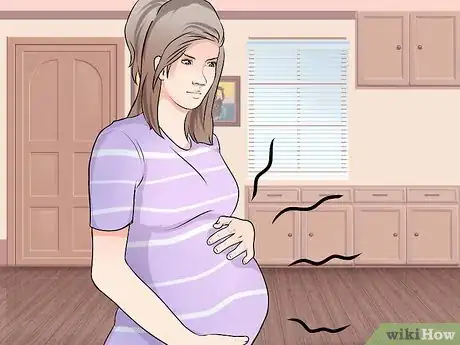

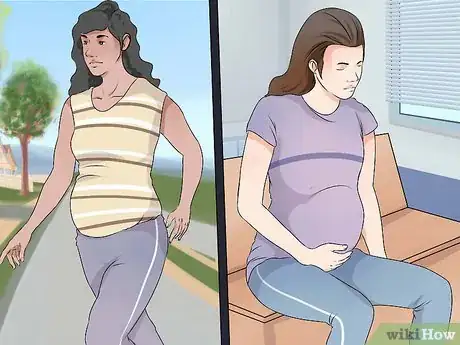
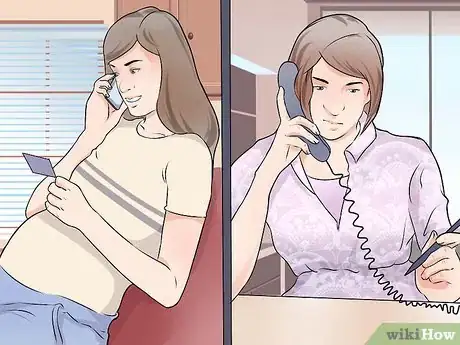




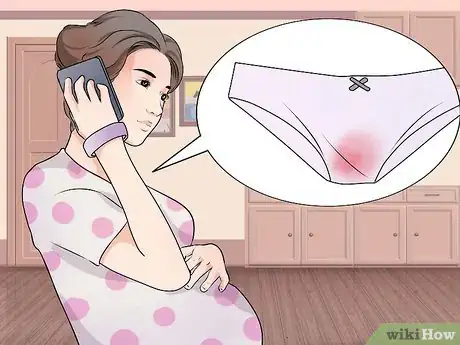
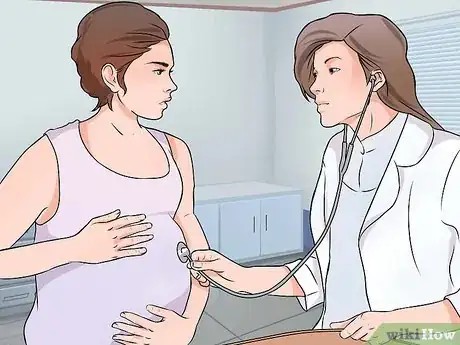
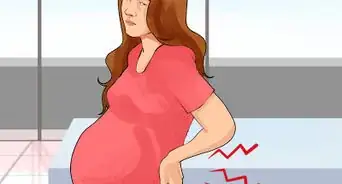


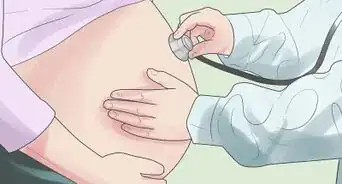




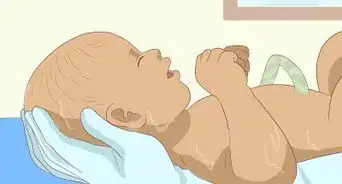















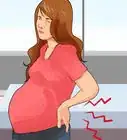


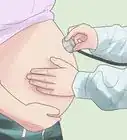



































Medical Disclaimer
The content of this article is not intended to be a substitute for professional medical advice, examination, diagnosis, or treatment. You should always contact your doctor or other qualified healthcare professional before starting, changing, or stopping any kind of health treatment.
Read More...